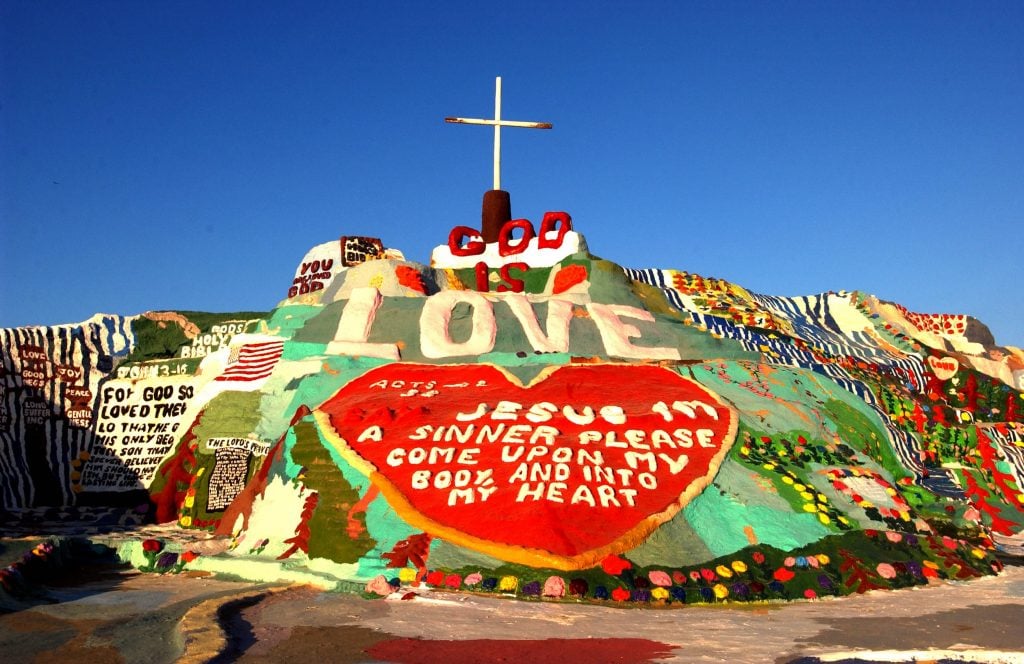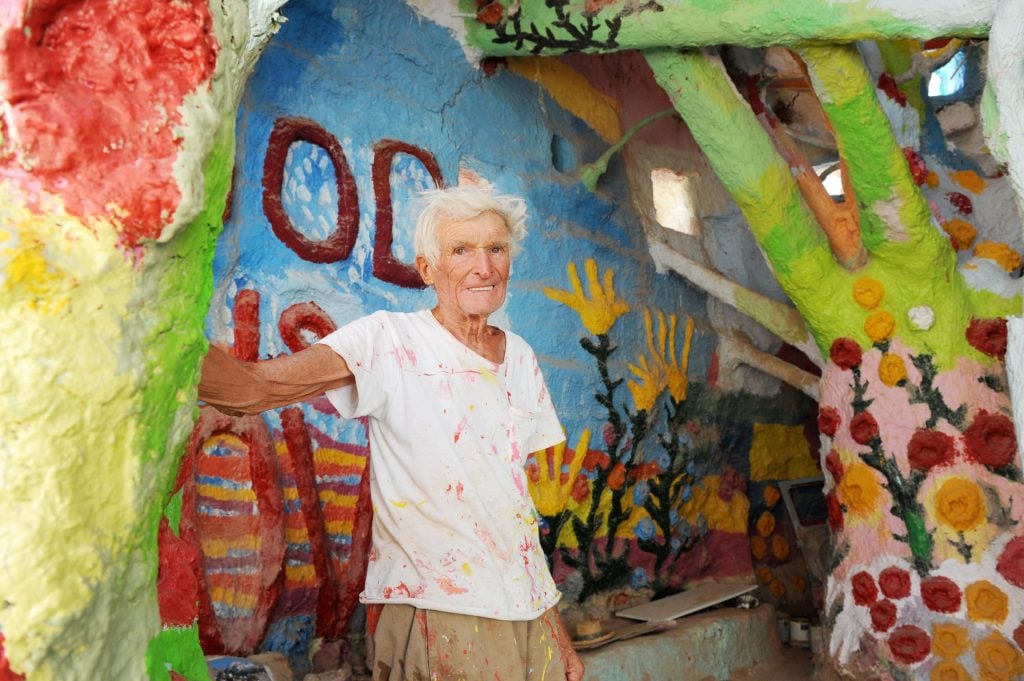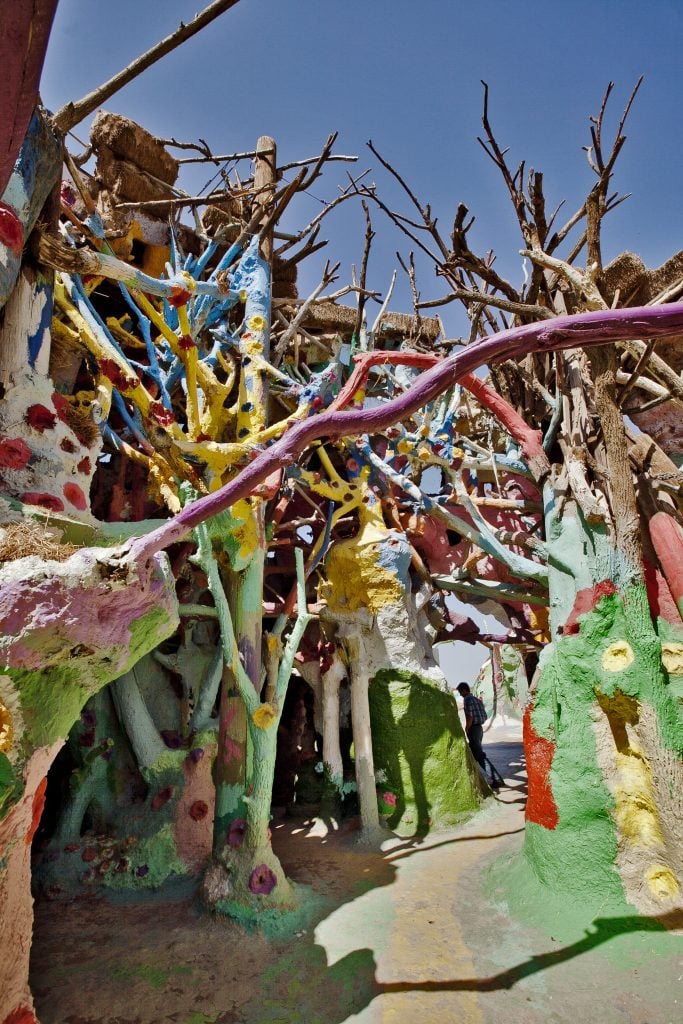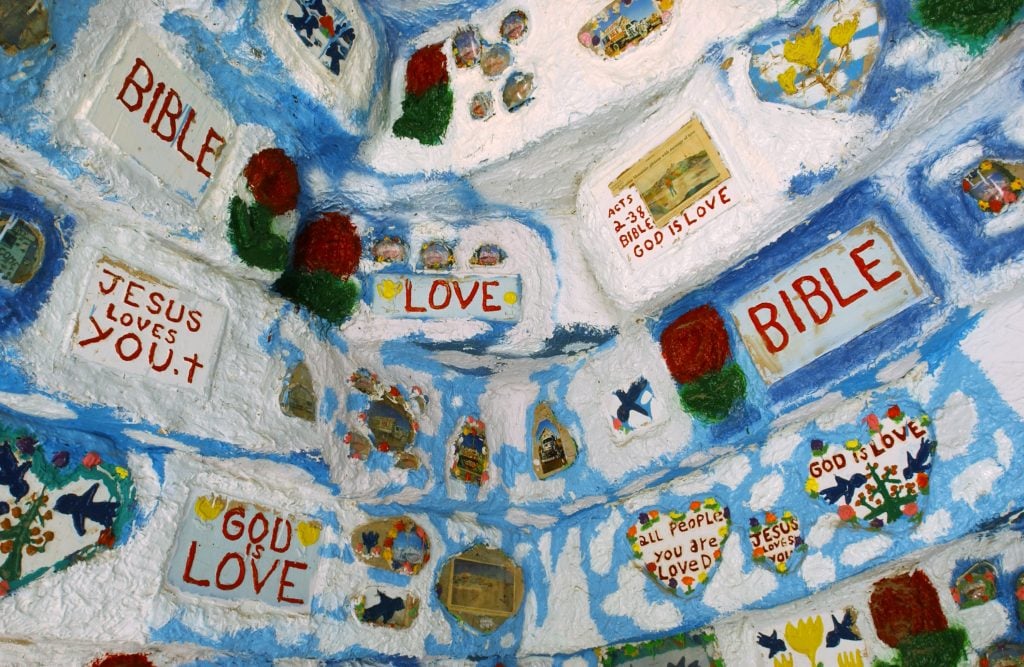Art World
Art Bites: How an Outsider Artist Turned Debris Into a Monument to Love
Leonard Knight, a Vermont handyman, sought to change the world with environmental art.

Leonard Knight, a Vermont handyman, sought to change the world with environmental art.

Tim Brinkhof

Leonard Knight was born in 1931 on a family farm near Burlington, Vermont, the fourth of six children. His daily chores—watering vegetables, cultivating the land, feeding the pigs—made for a childhood that, in his own words, was “too much work and not enough play.”
“Work” also included school, which Knight didn’t enjoy much either. Feeling uncomfortable and overwhelmed at his small-town high school, he dropped out during his sophomore year. When he was drafted into the U.S. Army during the Korean War, excitement to see more of the world gradually gave way to the same fear and frustration he felt as a student, lost in the trappings of a large and impersonal organization. Settling in California following his discharge, he cycled from one odd job to another, supporting himself as a car mechanic, salesman, and guitar instructor.
He got a sense of direction when, in 1967, a visit to his churchgoing sister in San Diego resulted in a religious awakening. Finding that his newfound appreciation for Christianity did not resemble the sermons he heard from local preachers, Knight resolved to become a preacher himself. Instead of a pulpit, he tried to spread his message by attaching the words “God is Love” onto a hot air balloon, but the fabric ripped before he could get it into the air.

Leonard Knight, creator of Salvation Mountain. in July, 2010. Photo: Paul Harris/Getty Images.
Undeterred, Knight then had the idea to put his message onto the side of a mountain. Because he was not allowed to build on top of an actual mountain, he resolved to make one from scratch. After settling in rural southern California, near Slab City, he worked from 1984 to 1989 pouring incremental layers of cement next to an abandoned riverbed until his creation—dubbed Salvation Mountain—grew to more than 50 feet tall.
His determination was so great that when the “mountain” collapsed four years into building it, he immediately started over. Salvation Mountain number two, a mix of native adobe clay with straw, proved more durable than its predecessor. The finished work, emblazoned with his original “God is Love” slogan alongside biblical quotations and topped by a large cross, required over 100,000 gallons of paint, the majority donated by his growing legion of admirers.

Part of Leonard Knight’s Salvation Mountain. Photo: Ted Soqui/Corbis via Getty Images.
He continued adding to the structure from the early 1990s until his death in 2014 at age 82. During the last few years of his life, he lived in the back of his truck, “sharing his space,” as the Los Angeles Times wrote in an obituary, with “cats without names, undeterred by the brutal desert heat or howling winds.”
Knight’s impressive and unusual project turned him into a local celebrity. According to the Los Angeles Times, he remains a widely respected figure in California’s folk art scene. He has also been the subject of numerous documentaries, and even played himself in Sean Penn’s 2007 film Into the Wild, appearing in a scene set on Salvation Mountain.

Part of Leonard Knight’s Salvation Mountain, 2002. Photo: David McNew/Getty Images.
“Leonard Knight is one of the great visionary artists of all time because his work is so palpably spirit-filled,” Rebecca Alban-Hoffberger, director of the American Visionary Art Museum in Baltimore, Maryland, which celebrates self-taught outsider artists, told ABC News in 2002. “It inspires people with faith and without faith.”
What’s the deal with Leonardo’s harpsichord-viola? Why were Impressionists obsessed with the color purple? Art Bites brings you a surprising fact, lesser-known anecdote, or curious event from art history.